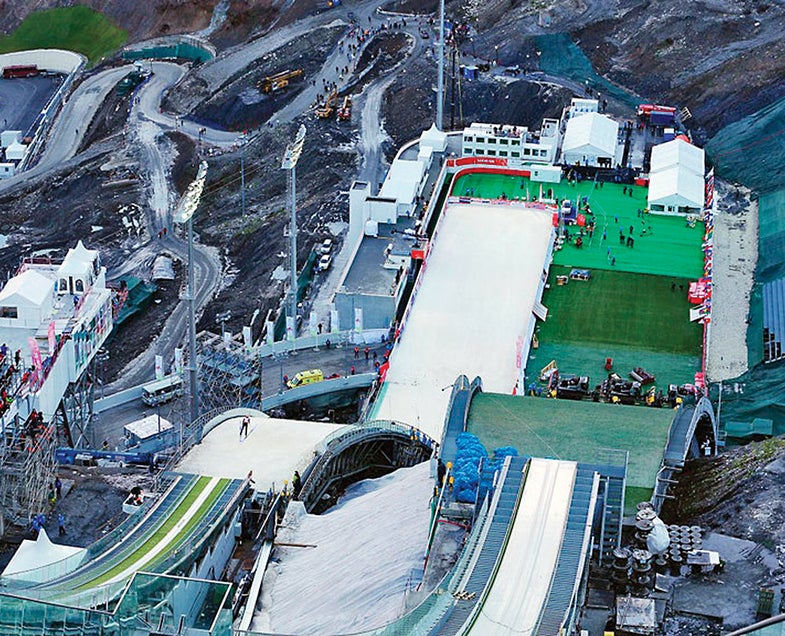Engineering The Ideal Olympian: Sochi’s Snow Strategy
How to put a subtropical climate on ice

Within Russia, Sochi is known for its pleasant subtropical climate, which presents obvious challenges for a competition that revolves around ice and snow. During the 2010 Winter Olympics in Vancouver, another relatively mild site, snow cover was so poor that some of the ski and snowboarding courses had to be built up with straw bales first. To avoid a similarly embarrassing fate, organizers for the 2014 games hired the Finland-based logistics company Snow Secure. Its technicians homed in on the ski-jumping venue (altitude: 2,300 feet) as the site most likely to lack snow and developed a three-pronged strategy to ensure good coverage.
Snow Banking
In 2013, workers pushed about 28 million cubic feet of artificial and natural snow into massive piles and covered it with thick reflective blankets to reduce melting. Snow from these reserves, located high in the Caucasus Mountains, can be transported down to the ski jump as needed.
Standard Snowmaking
Most of the snow on the ski jump will be artificial. Ten large snow guns (out of 500 total at Sochi) have been running 24/7 there since early December. They blast atomized water into the air when it’s coldest—usually at night and in the early morning. The droplets freeze and become snow.
Above-Zero Snowmaking
If the temperature rises above freezing, another snowmaking system will use cooling units to create an ice slurry. Snow can be separated out, but the method is costly and inefficient. It takes a day to produce 26,000 cubic feet of snow, an amount that standard machines can make in about 20 minutes.
Click here for the rest of our 2014 Olympics coverage.
This article originally appeared in the February 2014 issue of Popular Science.